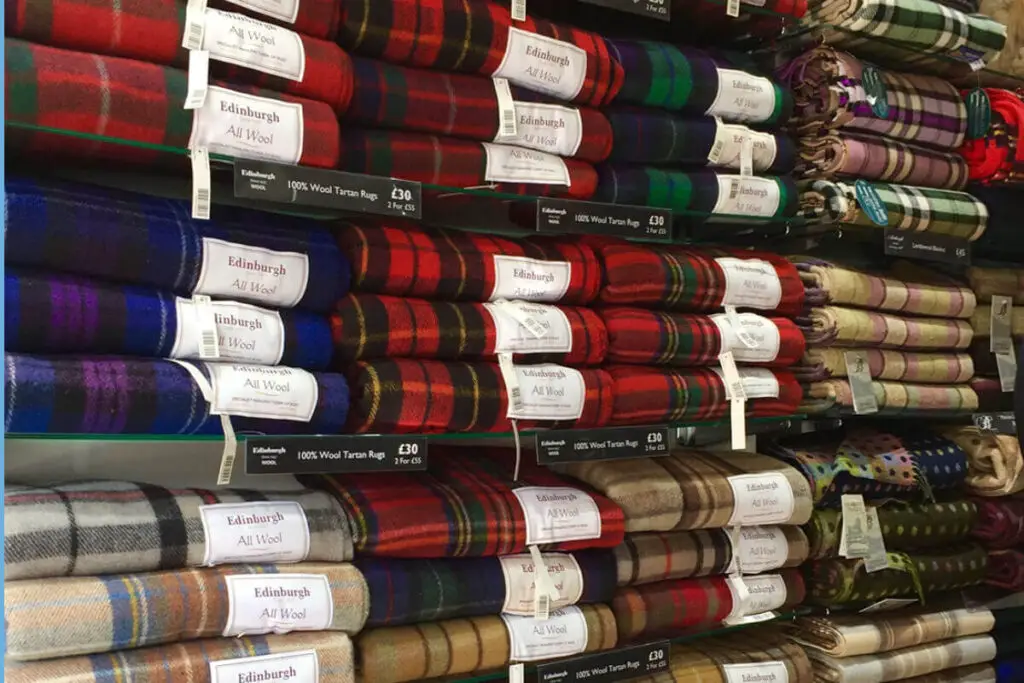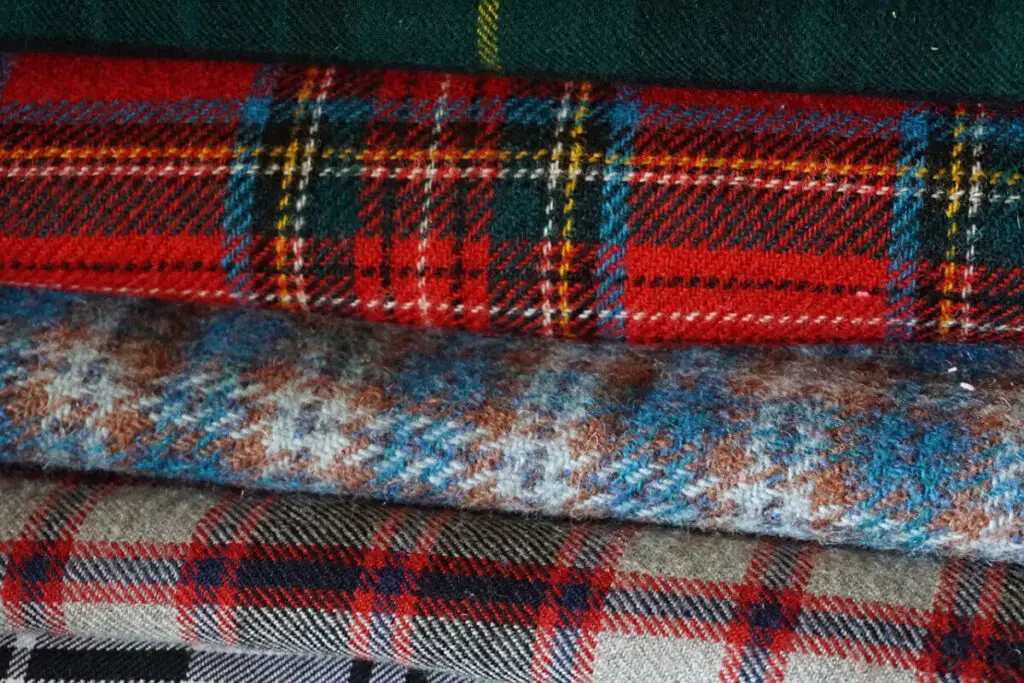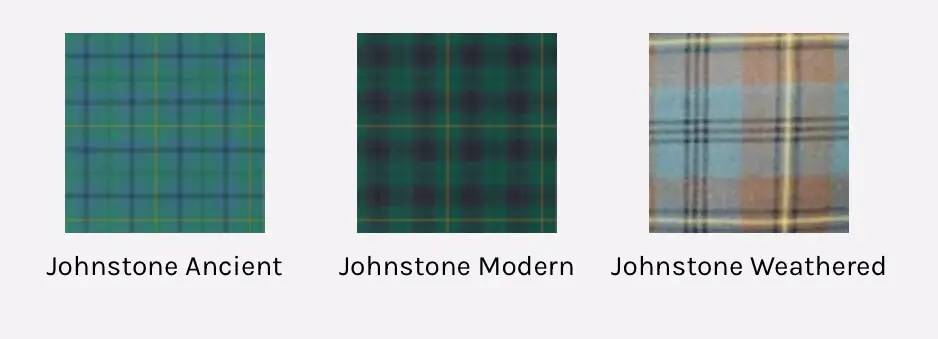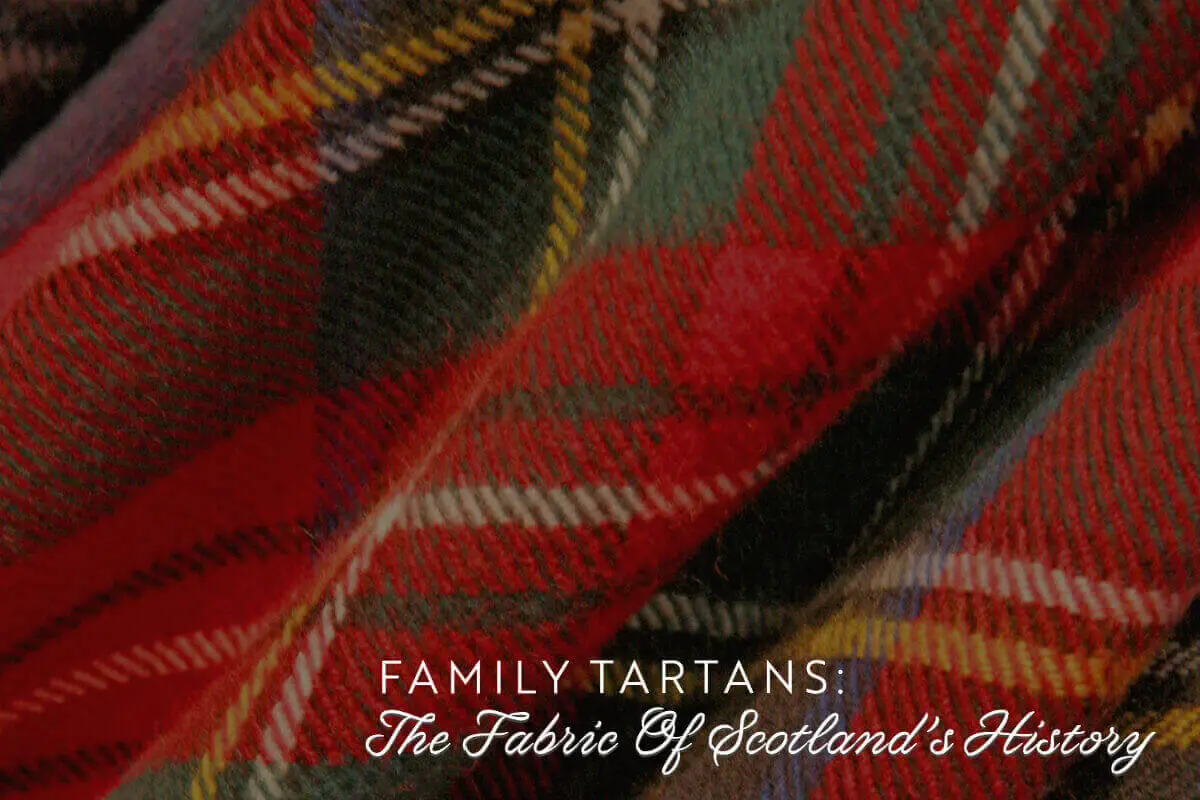Tartan, the fabric that has become the symbol of Scotland, with its distinctive criss-cross patterns and varying colors, has a rich and storied past. Much like a family tree, tartans carry their genealogy that traces back centuries.
The Scottish family tartans are interwoven threads that not only represent the historical fabric of a clan but also tell a story of resilience, endurance, and unity. At the heart of this tapestry lies a unique fabric that has served as the country’s emblem and a symbol of its people’s resilience and unity – the tartan. Each tartan, with its intricate patterns and varying hues, tells a story – not only of a clan but also of a nation. This story, embedded in the threads of tartan, spans centuries, chronicling Scotland’s cultural evolution and the indomitable spirit of its people.
Table of Contents
- About The Scottish Family Tartans – A Unique History
- In The Mid-1700s, The Tartans Were Outlawed
- In The Early 1800s, Family Tartans Saw A Revival.
- Tartans Became A Nationwide Industry
- Johnston Or Johnstone Family Tartan
- Find Your Family Tartan
- Related Questions
About The Scottish Family Tartans – A Unique History
When travelers ventured to Scotland, they couldn’t help but notice the clothing of its inhabitants. As early as the 16th century, records described the tartan as ‘mottled,’ ‘marled,’ and ‘sundries colored.’
However, perhaps the most appropriate term for tartan originates from the Gaelic word ‘breacan,’ translating to ‘chequered.’ The essence of a tartan lies in its check-like arrangement, or the ‘sett,’ repeated until the desired length of cloth is achieved.
Tartans Were A Vital Part Of Highlander Attire
Over the centuries, tartan has remained a vital part of the Highlanders’ attire. While it was worn in other parts of Scotland, the Highlands saw the continued evolution of tartan, transforming it into a symbol of clan kinship.
Tartan-made items have become synonymous with traditional Scottish attire, from the philabeg (kilt) to the trews (trousers).

Accompanying these garments were shoes made from untanned hide and the Quran, a knee-length boot shaped to the leg and secured by thongs. A knitted wool bonnet, proudly displaying a badge of the clan (typically a plant or flower), and the sporran, a heavily ornamented leather purse worn in front of the kilt, completed the outfit.
Scottish women wore a linen type of bonnet over their heads, fastened under their chins. They would also don a cargo, a small square of tartan worn over the shoulders, and the area said, a long tartan or self-colored garment reaching from head to ankles, pleated all around and secured at the breast with a brooch and at the waist by a belt.
Ancient Family Tartans Had Fewer Colors And Meticulous To Weave
Early tartans were straightforward checks of two or three colors, with dyes derived mainly from local plants, roots, berries, and trees. The district residents typically wore these tartans where they were made, subsequently becoming the area or clan tartan.
Tartan weaving was a meticulous process, with weavers going to great lengths to ensure accurate patterns by marking each color of every thread upon a made dalbh, or pattern stick.
A 1572 record recounts an event where a housewife accused a weaver of making cloth according to his ‘awin fasoun’ (own fashion) instead of her specifications. The housewife won the case, setting a precedent for the importance of accurate tartan weaving.
Chemical Dyes Ensured Elaborate Patterns Of Family Tartans
The evolution of chemical dyes facilitated the introduction of more elaborate patterns and vibrant colors. As clans grew and branched through birth, death, or marriage, new clans would add an over stripe onto the base pattern of the parent clan, creating their unique tartan.
The affinity for tartan wasn’t limited to commoners; even the royalty held tartan in high esteem. Records from 1471 show that the treasurer to King James III purchased a length of tartan cloth for the king and queen. Later, King James V wore tartan during a hunting trip in the Highlands in 1538, and King Charles II sported a tartan ribbon on his coat at his wedding in 1662.

Throughout the 16th and 17th centuries, tartan was exported from the Highlands to the South, with prices determined by the number and shades of color in the cloth to prevent overcharging. This attests to the high regard for tartan, not just as a local product but as a valued commodity in more excellent Scotland and beyond.
In The Mid-1700s, The Tartans Were Outlawed
The tartan’s evolution did not occur without its share of strife. The Dress Act of 1746, implemented following the Jacobite Rebellion, sought to suppress the Highland culture by prohibiting the wearing of tartan.
The punishment for infringement was six months in jail for the first offense and deportation for seven years for the second. Despite this oppression, the spirit of tartan lived on.
Tartan was worn secretly during the ban, and its production moved underground. This clandestine weaving further cemented tartan as a Scottish resistance and identity symbol.
The prohibition was eventually lifted in 1782, nearly four decades later. The resilience demonstrated during this time is still represented in the tartan patterns today, echoing the defiant spirit of the Highlanders.
In The Early 1800s, Family Tartans Saw A Revival.
In the 19th century, tartan saw a resurgence known as the tartan revival. It began in 1822 when King George IV visited Scotland, an event orchestrated by Sir Walter Scott.
For his visit, Sir Walter Scott encouraged the Scots to wear their traditional tartan attire despite falling out of common usage due to the previous ban. The royal endorsement sparked a national and international fashion for tartan.
From this period on, tartans were not only used to denote a particular clan but also became a way to signify different occasions.
There were hunting tartans, designed with muted colors to blend in with nature, and dress tartans, which were brighter and used for celebratory occasions. There were also mourning tartans, predominantly black and white, used in funerals.
Tartans Became A Nationwide Industry
As tartan became more popular, the demand for new patterns increased. Tartan weaving transformed from a regional craft into a nationwide industry. Modern techniques in textile production allowed for even more diversity in design and color, and the number of tartans available exploded.
Today, tartan is unique in Scottish society, and its influence has spread globally. It’s not just a fabric; it’s a symbol of Scottish heritage, resilience, and unity. From clothing and accessories to interior design, tartan has maintained its relevance, adapting to changing fashion trends while retaining its historic charm.
From its early beginnings as simple two or three-colored checks to today’s vibrant and diverse patterns, the tartan’s journey is a testament to the Scottish spirit. The colors and patterns may have changed over time, but the essence of tartan remains unchanged – a representation of kinship, pride, and resilience.
Like the weaver’s thread, the story of tartan is intertwined with the history of Scotland and its people, a narrative that continues to unfold with every line and color.
Johnston Or Johnstone Family Tartan
One of my great-grandfathers, James Johnstone, was a baron in the Scottish Johnstone Clan. One day his father, brothers, and uncle went to a meeting, and they were all beheaded by a rival clan.
James could escape as someone warned him before he got him not to come home and told him what had happened. He had a prize put on his head but could survive by pretending to be a traveling blanket tradesman, not a nobleman.
Even though he eventually moved to England with his wife, Isabella Fairbairn, he would have had a family tartan.
These are the Johnstone family tartans:

Find Your Family Tartan
If you want to find your Family Tartan, you can go to the Scotland Shop to find your family tartan. You can find out more by clicking on the link below:
The Hummel Family is a website all about Family History research. We focus on Swedish, German, English, Scottish, and American Genealogy. We also discussed Asia and China, as we had ancestors who spent many years in China.
You are welcome to join us and become part of our community by signing up for our FREE newsletter, The Hummel Family; sign up by clicking here.
Also, check out our Youtube Channel, Family HIstory Buzz, by clicking here.
Related Questions
What Is Eminent Chinese Of The Ch’ing (Qing) Period (1943), by Dr. Arthur W. Hummel?
The editor of the book Eminent Chinese of the Ch’ing Period is my grandfather, Dr. Arthur W. Hummel. But he did not work alone but with the help of two accomplished Chinese scholars, Dr. Chao Ying Fang and Dr. Tu Lein Che Fang. Together, as a team, they spent over 9 years and thousands of hours compiling this significant work about eminent people during the Chinese Qing (Ch’ing) dynasty. This book continues to be used and remains an essential Chinese scholarly work. There is also an online version available.
You can read more about this and Dr. Arthur William Hummel by reading our blog, Eminent Chinese Of The Ch’ing (Qing) Period (1943), Arthur W. Hummel by clicking here.
What Are Some Chinese Proverbs About Life And Living?
My grandparents, Arthur, and Ruth Hummel, lived in China in the early 1900s. During this time, they started to collect and translate Chinese proverbs. We have over 175 of their Chinese proverbs categorized by the subjects they set for them.
You can discover more Chinese proverbs by reading our blog Over 175 Inspirational Chinese Proverbs On Life And Living by clicking here.
Why Did Matthew Start His Gospel With The Ancestors Of Jesus?
Matthew started his gospel with the ancestors of Jesus as he wanted to show the Jews that the Messiah had come as had been prophesied. He also wanted to show Jesus fulfilled the prophecy that the Messiah was a son of David.
You can discover more by reading Why Did Matthew Start His Gospel With The Ancestors Of Jesus? by clicking here.

